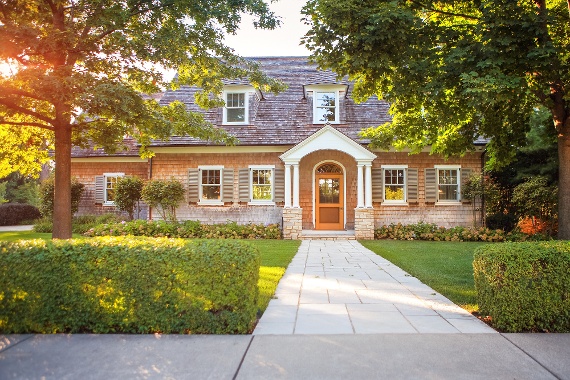
The health of a tree can make or break a property’s value. While they can be beautiful and have many positive effects, trees can easily become a liability if dead, damaged, or rotting. To protect your home, family, and property value from the damage that an unstable tree can cause, a regular inspection of trees on your property should be a top priority.
What to Look For
Branches
If your trees are healthy, you primarily need to watch for branches. Lightning, strong wind, ice, and snow often put extra strain on your tree’s limbs. This can cause limbs to partially or fully break off. You may notice broken or dangling branches on the ground, which should prompt you to look for any that may be caught in the canopy and at risk of falling. Dead branches will have dead leaves. If any limbs on your trees have brown leaves when the rest are green and alive, it is a sign of a dead or broken limb that should be taken care of. In addition, you can look for branches that may be missing bark or growing fungus that’s not seen elsewhere on the tree. Both of these indicate dead wood. Often, branches or parts of your tree will begin to split. Look for cracks where branches attach to the trunk.
Trunk
In addition to branches, there are also signs to look for on a tree’s trunk. One of the more obvious signs is cracks and cavities in the trunk. This likely means the trunk is rotted inside, which makes it unstable. You should also watch for oozing or bleeding on the trunk, as well as missing or sunken bark. Fungal growths on the trunk also indicate that your tree may be dying.
Roots
The roots of a tree may be able to give you information about its health, as well. Fungus along the roots, cracks or cavities in the roots, and raised soil around the base of the tree are all signs of decay and instability. If you live in an area where there has been recent construction, such as a new sidewalk, this may have damaged the roots, as well, so you should look out for further signs of decay.
Leaning trees are normal, but you should keep your eye out for excessive leaning. If your tree is off balance, it has a higher chance of falling with any additional strain. Multiple trunks can make a tree unstable and off balance. If you are questioning the health of any trees that may put your home or family in danger, contact a professional.
What to Do
Damaged or dead limbs should be pruned and cut off. Depending on the size and height of the tree, this may be a fix that you can do on your own. However, never put your safety at risk. Trimming limbs can be a dangerous job and calling a professional as soon as possible to have the limb removed may be the best option.
If the problem is a problem with the tree’s trunk, contacting a professional to try to find a solution is the best option. The tree may need to be completely removed if it’s beyond help, which you should not attempt to do on your own. If your tree is leaning or you notice roots lifting the soil, you can attempt to anchor your tree so it doesn’t fall.
Trees can be dangerous and beautiful at the same time. While they often add curb appeal to your property, make sure you know how to keep them healthy and identify signs of potential danger. For more tips on ways to keep your home safe, subscribe to our blog!








Comments